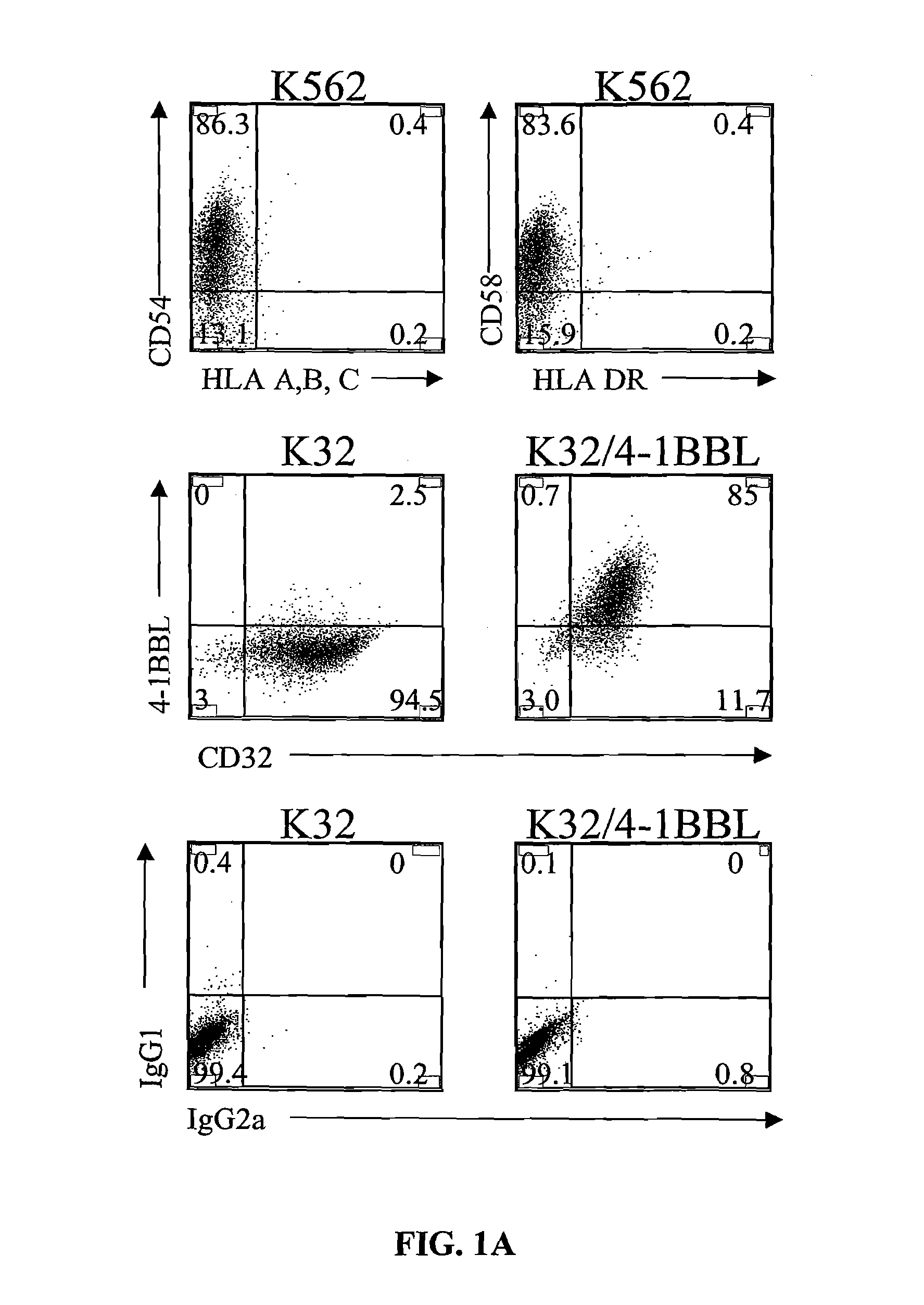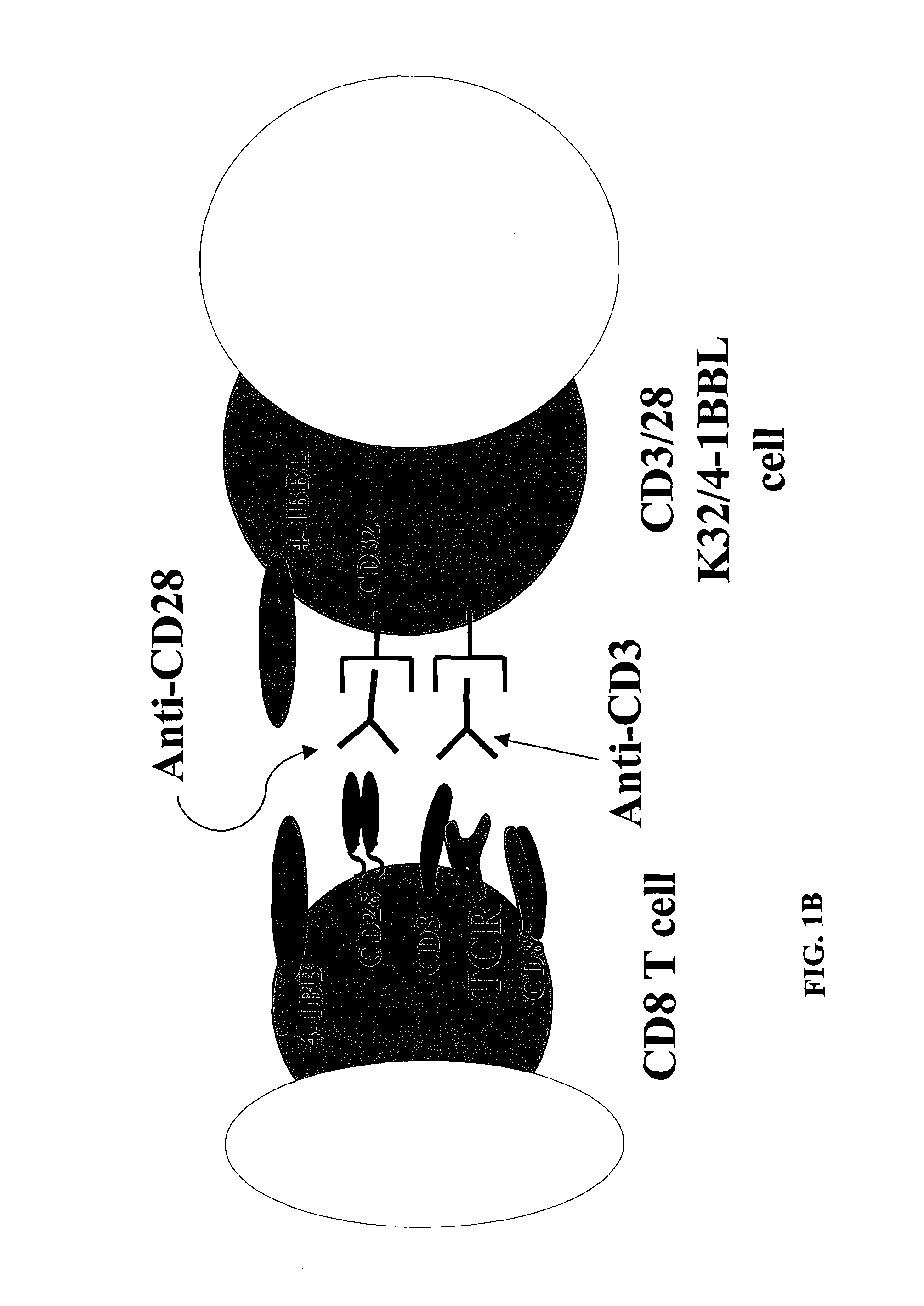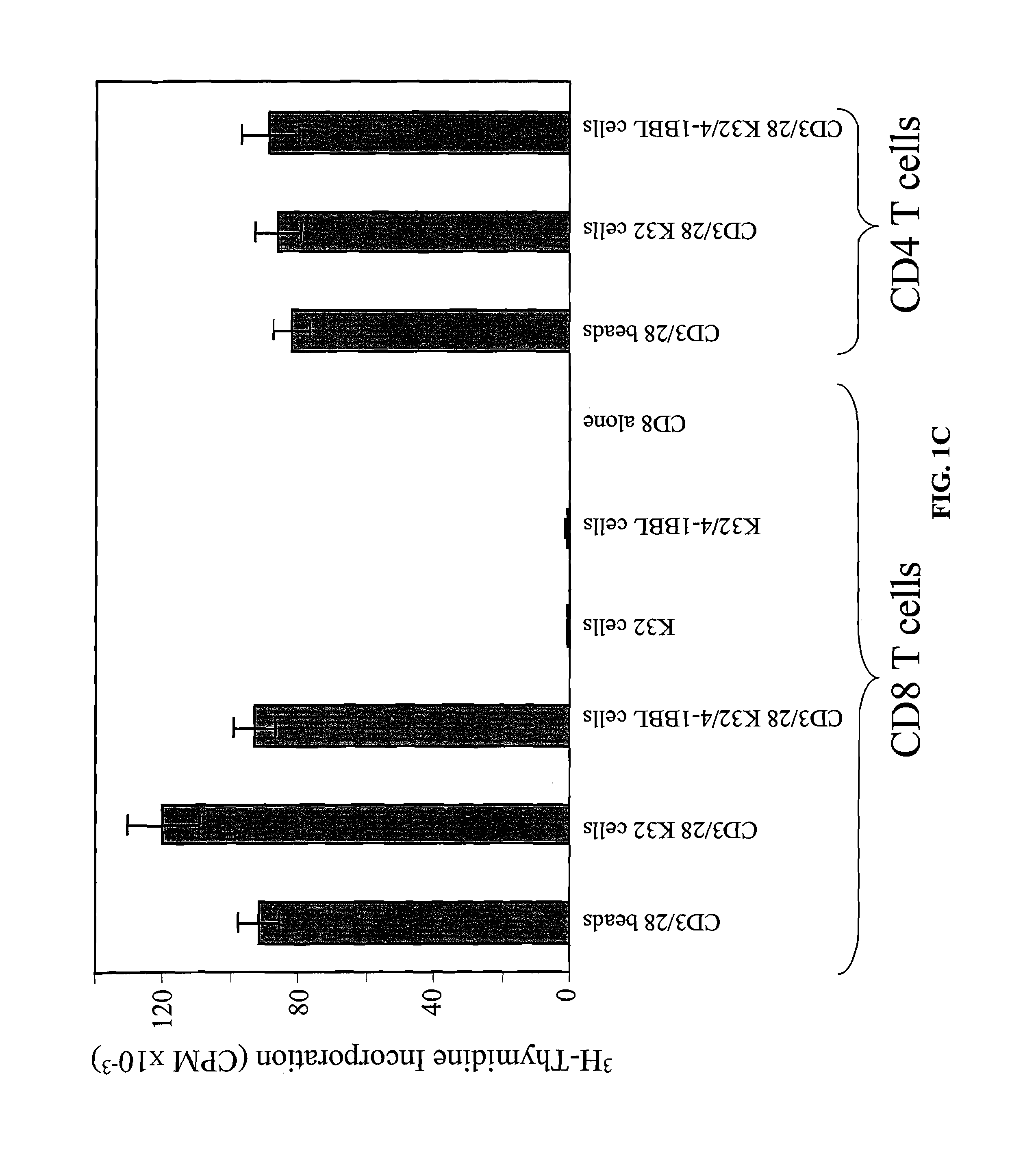Activation and expansion of T-cells using an engineered multivalent signaling platform as a research tool
a multivalent signaling and activation technology, applied in the field of activation and expansion of t-cells, can solve the problems of limited replicative capacity, difficult to obtain a sufficient number of cells to be useful, and problematic limiting factors, so as to improve the survival rate of a population of cd8+ t cells, reduce the level of apoptosis, and increase the level of bcl-xl
- Summary
- Abstract
- Description
- Claims
- Application Information
AI Technical Summary
Benefits of technology
Problems solved by technology
Method used
Image
Examples
example 1
Construction of Artificial APCs (aAPCs)
[0222]A cell-based aAPC was designed which could be genetically manipulated to express different co-stimulatory molecules in addition to CD28. K562 cells were chosen because they do not express HLA proteins that would promote allogeneic responses, but they do express the T cell interaction molecules ICAM (CD54) and LFA-3 (CD58) (FIG. 1A). K562 cells expressing the human Fcγ receptor CD32 (K32 cells) were transfected and then cloned to permit exogenous loading of anti-CD3 and anti-CD28 antibodies (FIG. 1A). Similarly, the K32 / 4-1BBL line (FIG. 1A, B) was generated by transfecting K32 cells with human 4-1BB ligand. Cultures were initiated by adding γ-irradiated aAPCs to fresh human CD8+ T cells prepared by negative selection as described.
[0223]K32 and K32 / 4-1BBL aAPCs efficiently activate human polyclonal CD8+ T cells. The aAPCs were tested for their ability to stimulate the initial activation and proliferation of primary CD8+ T cells. The T cell...
example 2
K32 / 4-1BBL aAPCs Permit Long-Term Expansion of Human Polyclonal CD8+ T Cells
[0224]Next, to determine whether the aAPC were sufficient to maintain long term propagation of CD8+ T cells (FIG. 2A) CD8+ T cells were stimulated with aAPCs—but no exogenous cytokines were added to the medium. CD3 / 28 bead-stimulated cells failed to proliferate after the second stimulation with aAPCs, in agreement with previous findings. Similarly, CD8+ T cells stimulated with CD3 / 28 in the context of K32 cells entered into a plateau phase of the growth curve within 2 weeks of culture, and no additional net growth of cells occurred after re-stimulation.
[0225]In contrast, when CD8+ T cell cultures were stimulated with K32 / 4-1BBL / CD3 / 28 aAPCs, they remained in exponential growth even after a third stimulation. This augmentation of long-term proliferation was reproducible, as the average increase in the total number of T cells was 410-fold higher in cultures stimulated with K32 / 4-1BBL / CD3 / 28 than in cultures st...
example 3
Efficient Propagation of Antigen-Specific Cytotoxic T Cells by K32 / 4-1BBL aAPCs
[0227]In certain embodiments, immunotherapy with CD8+ T cells will likely require cells with antigen-specific cytolytic functions. Therefore, it was necessary to determine whether the K32 / 4-1BBL aAPCs could be used to expand antigen-specific CTLs, although antigens are not essential in the presentation of the aAPCs. Consequently, they were used to culture a population of MHC tetramer sorted primary CD8+ T cells for 10 weeks (FIG. 3A). Purified CD8+ T cells obtained from an HLA-A*0201 donor were stained and sorted with an A*0201 MHC tetramer loaded with a flu matrix protein peptide (flu MP tetramer). The tetramer+population was present at an initial frequency of 0.081% (FIG. 3B), which presumably was composed mainly of memory T cells. Cultures of tetramer− CD8+ T cells served as an internal control population of T cells to assess the growth potential and specificity of the tetramer+population of CD8+ T cel...
PUM
 Login to View More
Login to View More Abstract
Description
Claims
Application Information
 Login to View More
Login to View More - R&D
- Intellectual Property
- Life Sciences
- Materials
- Tech Scout
- Unparalleled Data Quality
- Higher Quality Content
- 60% Fewer Hallucinations
Browse by: Latest US Patents, China's latest patents, Technical Efficacy Thesaurus, Application Domain, Technology Topic, Popular Technical Reports.
© 2025 PatSnap. All rights reserved.Legal|Privacy policy|Modern Slavery Act Transparency Statement|Sitemap|About US| Contact US: help@patsnap.com



